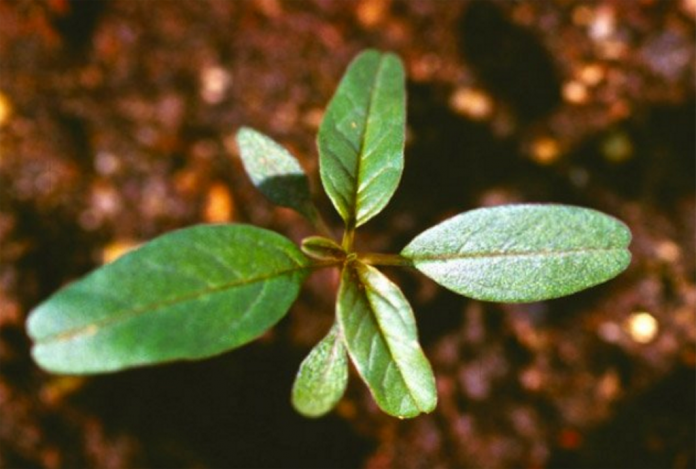URBANA, Ill. — Farmers have been battling herbicide-resistant weeds for generations. A common practice for most of that time has been to rotate between different herbicides every season.
But despite farmers’ best efforts, herbicide resistance has grown through the years, with some weed populations showing resistance to not one but four or five different herbicides.
Doesn’t work
A new study from the University of Illinois explains why herbicide rotation doesn’t work.
“If you were to ask farmers what is the one thing you can do to delay resistance evolution, they’ll say rotate herbicides. This study shows that’s not true,” said Pat Tranel, crop scientist at the University of Illinois.
Survival of resistance
Herbicide resistance results from random genetic mutations that keep weeds from being harmed by a particular herbicide. When farmers continually spray the same herbicide year after year, those with the mutation, referred to as a resistance allele, survive and reproduce.
Over time, the proportion of plants with the resistance allele grows.
Conventional thinking said that any defense trait — in this case, herbicide resistance — should come at a cost to the plant. It might be well protected against the herbicide, but it might not grow as tall, or flower as early.
When the trait reduces a plant’s reproductive output, that’s known as a fitness cost. A fitness cost to herbicide resistance should be apparent in years when alternative herbicides are used.
“If plants have glyphosate resistance, but they’re sprayed with 2,4-D, for example, the majority of those plants will die because they’re not resistant to 2,4-D. But no herbicide kills 100 percent of the weeds, resistant or not,” Tranel said.
“You have to think about the small percentage that live.”
Once you have resistance, you’re stuck with it.
If there’s a high fitness cost to the glyphosate resistance allele, most of the surviving plants will be small or will flower late and they won’t produce many seeds, he added.
“But if the fitness cost is low, those plants will produce just as many seeds as plants that don’t have the allele. Herbicide rotation relies on the assumption that the fitness cost is high.”
About their study
To test that assumption, Tranel and his research team designed a simple, though time-consuming, experiment. They took female waterhemp plants with no resistance alleles and allowed them to be pollinated by males with resistances to five different herbicides.
Because female waterhemp plants can produce as many as a million seeds, it was easy to get the 45,000 they needed to start the experimental population. They scattered seeds on the soil floor of a greenhouse and just let them grow.
When females started producing seeds, they were collected to start the next generation. Between generations, the researchers removed all the plants and made sure no seeds remained in the soil.
The cycle was repeated for six generations over three years.
How could the study test the efficacy of herbicide rotation if no herbicides were sprayed? It comes back to fitness cost.
Remember, the assumption is that without the herbicide, the resistance allele offers the plant no benefit, and could carry a cost. The researchers were allowing those fitness costs a chance to play out during the study.
Tiny decrease
“If the resistance alleles had a high fitness cost, we should have seen them decrease in frequency or disappear over the six generations,” Tranel said.
Instead, the alleles for almost all five resistance types were essentially unchanged. The allele that confers resistance to ALS-inhibiting herbicides was statistically lower after six generations, but the decrease was tiny in terms of real numbers.
“The frequency decreased by less than 10 percent a year,” Tranel said. “At the rate it was decreasing, even if a farmer used an alternative herbicide for nine years, the frequency of resistance to ALS inhibitors would only be cut in half.”
Gene doesn’t go away
Waterhemp has two known strategies to ward off glyphosate-based herbicides, such as Roundup, and the researchers tested the frequency of both.
“Plants with one type of glyphosate-resistance mechanism make multiple copies of the target site for glyphosate, a gene called EPSPS. And that’s what we found went away; the proportion of plants with multiple copies of EPSPS decreased about 15 percent with each generation,” Tranel said.
But, he emphasized, “even though it decreased quite a bit, it didn’t disappear by any stretch.”
“If you applied glyphosate, that resistance mechanism would come back even if you waited six years between applications.”
Gene mutation
The other glyphosate-resistance mechanism involves the same gene. This time, it’s a specific mutation in the EPSPS gene that guards the plant against the effects of glyphosate. The researchers found that the mutation in EPSPS actually increased about 10 percent in each generation.
Tranel thinks it may have been easier for one mechanism to replace the other because they both involve the same gene.
“This study tells us that fitness cost isn’t going to help you much in terms of herbicide resistance, so even long rotations aren’t going to work,” Tranel said.
“I tell farmers, ‘Once you have resistance, you’re stuck with it.’ It gives us that much more incentive to do the right things to avoid resistance in the first place.”
He recommends using multiple herbicides, using a pre-emergent herbicide and coming back with a post-emergent. And if you have escapees, get out of your tractor and pull them before they set seed.
“Because if they set resistant seed, this study tells you that you will have that resistance trait for life.”










